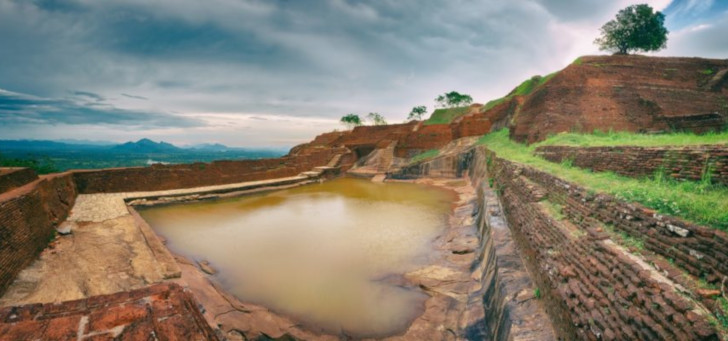A look back on the oldest gardens in the world… which still exist today!
Garden design dates back to when tribes stopped being nomadic and settled down in one spot but very few of their gardens survive since today. Paysalia gives you an opportunity to (re)discover the work of 6 Master Gardeners who designed the oldest surviving gardens!

Garden design dates back to when tribes stopped being nomadic and settled down in one spot but very few of their gardens survive since today. Paysalia gives you an opportunity to (re)discover the work of 6 Master Gardeners who designed the oldest surviving gardens!

Read also: Our selection of the most beautiful fountains in the world
6. The botanical garden in Padua (16th century, Italy)
The oldest European botanical garden of all was designed by Daniele Barbaro in 1545 CE to teach the use of medicinal herbs to students at the university. Its original structure is still in place with a central square, representing the world, surrounded by circles of water representing the oceans. The garden houses over 6,000 species of plants, some of which are very rare!
5. Fin Garden (16th century, Iran)
The design of this 2.3ha green space is a supreme evocation of the garden of paradise. Several buildings in the garden were used by Persian royalty. A clever system of qanats (underground irrigation canals) feeds water from a nearby source to its turquoise color pools and channels thus creating a luxuriant vegetation of cypresses in strong contrast with the local arid climate.
4. Zen Ryōan-ji Garden (15th century, Japan)
This is the most famous dry garden! Built between 1499 and 1507 CE, it is made up of gravels, moss, sand and rocks. Its rectangular floor is strewn with 15 stones laid out so you cannot see them all at the same time. Its simplicity excludes the superfluous, in accordance with the Zen thought. Innovative at that time, it was one of the first to be built on flat ground and with so few rocks.
3. Westminster Abbey College Garden (11th century, England)
The famous abbey was built by Anglo-Saxon King Edward the Confessor 900 years ago. Its garden was then used to grow food and medicinal herbs for the Benedictine monks. It had an orchard, a fish pond, hives and a kitchen garden. It was also a place for contemplation, carefully laid out and managed by a Master Gardener and two assistants. Still a very popular spot for Londoners… and tourists!
2. The Classical Gardens of Suzhou (11th - 19th century, China)
Famous throughout the world, this series of nine Chinese gardens aims to recreate nature in miniature through water, stone and plants. Every Master Gardener who succeeded their predecessors down through the dynasties was extremely meticulous and with their own techniques contributed a personal touch. The sophistication of these works had a great influence on garden designs at the time… and still even today!
1. The Gardens of Sigiriya (5th century, Sri Lanka)
The oldest garden of all (which is also our header image) is on an archaeological site. It was probably created to decorate the imperial citadel of prince Kasyapa, between 477 and 495 CE. The garden is divided into three sections: a water garden designed with a Persian charbagh quadrilateral layout, a terraced garden laid out on a pre-existing slope and a garden of stones and cavities connected by winding paths.
Discover our top 6 of most beautiful topiary art creations!
These green spaces testify to the evolution of gardening over the centuries and trends in garden design specific to different countries. If you plan to visit the gardens of the world, you will be pleased to know that all these sources of inspiration are open to the general public! And, a little more recent, you can see the gardens that competed for the Carré des jardiniers contest at Paysalia 2017.
Photo credit: © Olga Khoroshunova / stock.adobe.com

